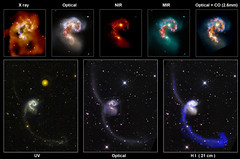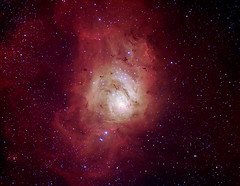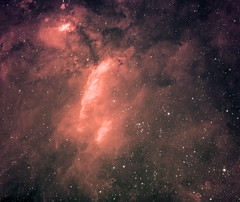A new, very intriguing Wolf-Rayet star has been discovered in the Milky Way. Actually it is a massive triple star system. It has been nicknamed Apep after an ancient Egyptian deity, this may be the first ever gamma-ray burst progenitor found.
The research has been mainly conducted at the University of Sydney using data from the Anglo-Australian Telescope (AAT) and ESO’s Very Large Telescope. The announcement was made public yesterday in several media releases by the European Southern Observatory and the University of Sydney, following the publication of the research paper in Nature Astronomy.

Image of Apep captured in the thermal infrared with the VISIR camera on the European Southern Observatory’s VLT telescope in Chile. Credit: Professor Peter Tuthill/ESO.
Earlier this week I was contacted from a journalist from The Age, Liam Mannix, who wanted to talk to me as “expert of Wolf-Rayet stars who has not participated in this research”. He called me and I spent 20 minutes to half an hour explaining what Wolf-Rayet stars are, the few of these stars known in our Galaxy (~600s) as they are the descendant of the most massive stars (and these are quite rare), and more. Of course, this conversation was latter summarized in a line in the article that he prepared:
Systems like this are very, very rare,” says Angel Lopez-Sanchez, an astrophysicist at Macquarie University who studies Wolf-Rayets and was not involved in the research. “It is a very exciting finding.”
But in any case I’m very happy I had this conversation with Liam and that I could contribute at least to the dissemination of this nice work.








